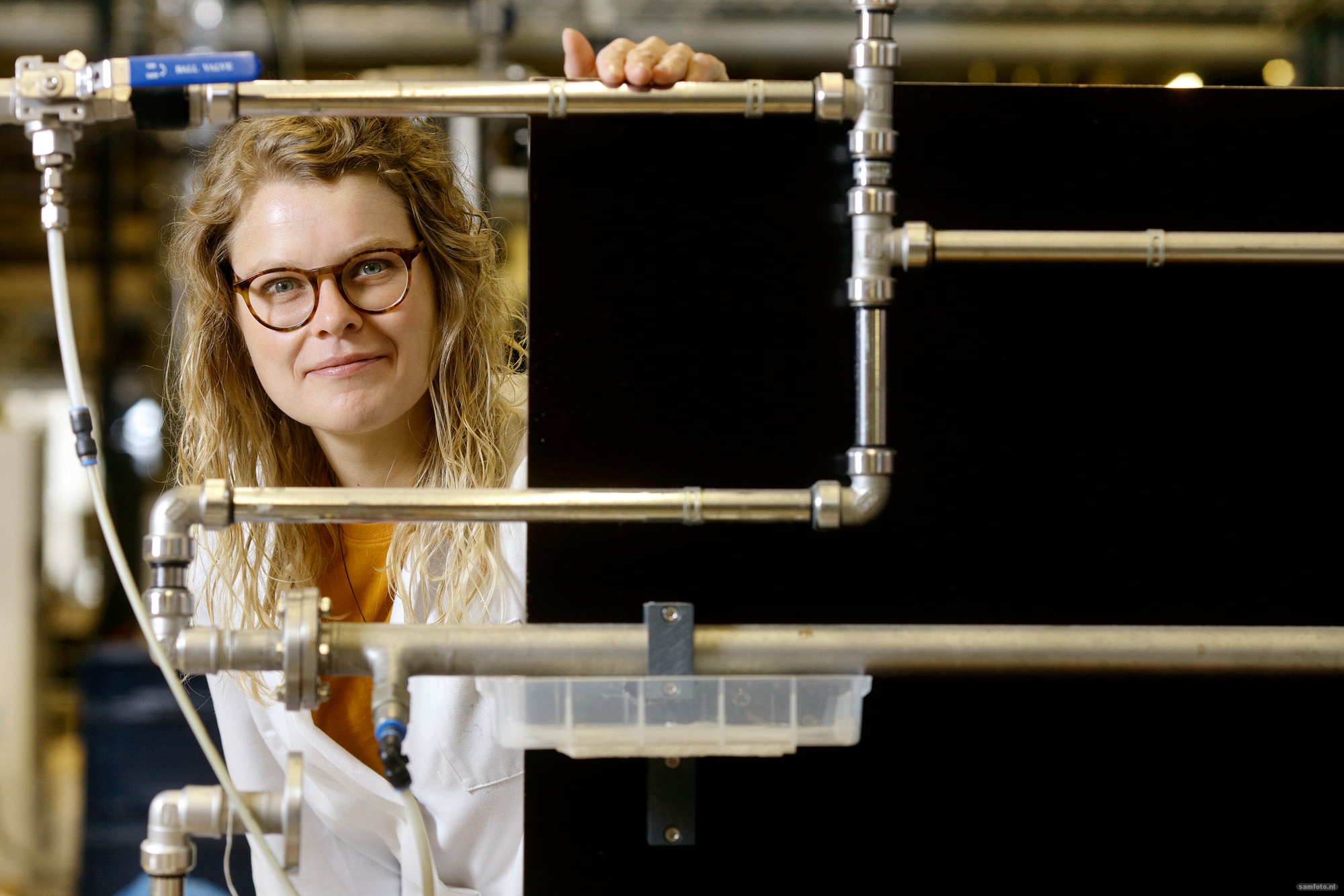It would save a lot of energy if sewage from residential neighbourhoods could be treated on the spot for other uses. Nanofilters might be an option, believes Franca Kramer.
(Photo: Sam Rentmeester)
The water company Evides is currently running a pilot involving the local treatment of sewage for industrial use. If this works out, it will no longer be necessary to transport water to and from a larger purification plant. Unfortunately, nanofiltration, one of the potential technologies, didn’t perform very well. However, Dr Franca Kramer sees opportunities to improve the method.
Kramer recently defended her PhD thesis on the properties of nanofilters at the Faculty of Civil Technology and Geosciences. Nanofilters are tubes with tiny pores in the walls through which only the smallest molecules fit. Sewage enters the tube and comes out the other end. On the way, some of the water and other small molecules pass through the wall.
Clogging
“My first research question was whether these filters would get clogged by the sewage quickly,” Kramer says. “I tested this at the Harnaschpolder treatment plant near Delft. It appears that you need to clean them every five days with chlorine, an aggressive cleaning agent that has detrimental effects on the environment.”
To reduce the dependency on chlorine, Kramer came up with a method that rinses the tubes with lime particles first. The particles form a thin layer on the wall, without blocking the pores. If, after a couple of days, some citric acid is added to the sewage, it reacts with the lime. The carbon dioxide bubbles that are generated release dirt from the wall. The result is that it takes longer before the tubes get clogged.
Quality
One of the problems Kramer encountered was the variable quality of the filters. Even within one batch by the same producer, there could be significant variation. Some filters let larger molecules through than others. This means the quality of the treated water differs between each filter while water companies require consistent quality.
To examine the degree of variation, Kramer deployed water with additional molecules whose size she knew precisely. This filtration technique can be compared to pouring a bucket of marbles of 10 different sizes through a grate. By looking at the marbles that fall through, you know the size of the openings in the grid.
Results
“This is how we succeeded in charting the differences in quality between the filters we received,” Kramer explains. “Some filters contained defects that even the largest molecules could pass through. For Evides, these differences were an important reason to switch to another technology for its pilot project.”
Kramer hopes the filters’ producer will use her results to improve the product. Other filtration methods aren’t perfect either, while we are certain to see a growing demand for local waste water treatment in the near future.
Christian Jongeneel / Freelance redacteur



Comments are closed.